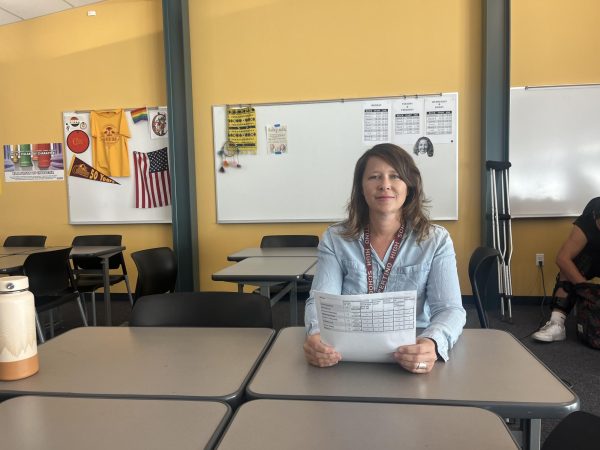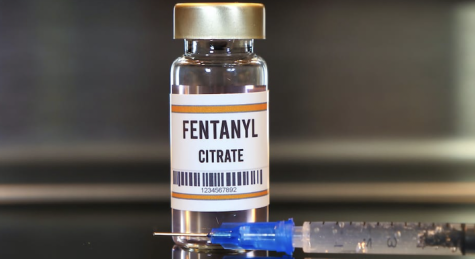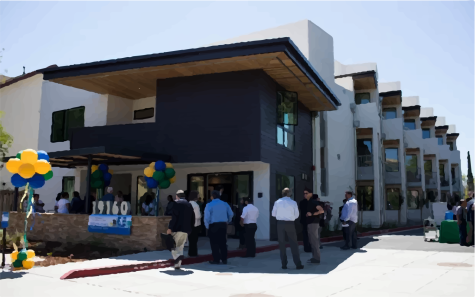Every 15 Minutes
The Wednesday and Thursday mystery assemblies came as a shockingly unique experience for the upperclassmen. After a fifteen year hiatus, the Every 15 Minutes program returned to Cupertino High School to express an emotionally-fueled and heavy message about drunk driving.
Over the course of two days, the Every 15 Minutes organization simulated the loss of several students to a drunk driving accident, complete with g a fake collision and funeral march.
From the moment the true purpose of the assembly was revealed, the controversy over the program’s sensitivity to such a distressing topic began to stir among the student body. Namely the very nature of the reveal drew criticism; the staff attempted to keep a tight lid on the nature of the assemblies until they actually started. The first words the oblivious students heard at the assembly was a simulated 911 emergency call played over the loudspeakers, while a tarp was pulled off of a staged car collision. Complete with fake blood, students posing as unconscious victims and real shattered windshields, the scene was elaborately created and realistic down to the bone.
The school administration had accounted for those who might have traumatic reactions to the graphic scene, but some students were concerned about those for whom the school could not account.
“I just thought the fake car accident was too extreme, especially for students who have gone through experiences like that,” a member of the audience who asked to remain anonymous said.“Even though [the administration] wanted us to have the full experience [of losing someone] … I don’t think this was the right way to teach us the consequences of drinking and driving. There should’ve at least been a warning.”
Others felt differently about the impact of the surprise factor.
“It adds on to the mysterious surprise element. And without the surprise element, [the assembly is] almost equivalent to a Powerpoint on why drinking and driving is bad. Although some people think it’s too harsh or too extreme, overall, it does contribute to getting the main point across more effectively,” junior Aditya Singh said. “I think the message of the assembly was really effective and it was needed. A lot of people know that drinking and driving isn’t good, but having that realistic experience and front row seats to see that, it really showed [how bad] it can really be.”
While students have suggestions for fine-tuning the Every 15 Minutes program, some staff members believe that such changes most likely cannot be implemented without omitting the program as a whole.
“We needed to follow certain guidelines, and one of the major things was the secrecy,” assistant principal Yukari Salazar said. “It wasn’t administration’s rule; it was [the Every 15 Minute organization’s] rule. If we were to not have it be a secret, then we wouldn’t have gotten the funding for it.”
Another restriction imposed by the California Highway Patrol, the source of money behind the program, was that the assemblies must center only on drunk driving; however, many students believed it would have been beneficial for the program to focus on distracted driving as a whole. The administration did acknowledge the emotional impact of the assemblies, but according to the Every Fifteen Minutes website, the very point of the program was to be “very emotional and heart-wrenching.” After the first assembly, Salazar announced to the audience that counselors were on site and willing to work with students.
A plethora of government workers and agencies aided in the program’s simulation: firefighters, paramedics and police; even the coroner arrived on site with equipment. The only unauthentic character was a grim reaper figure, complete with a scythe and pensively hovering over each fake victim.
Along with the main actors directly in the staged car crash scene, 10 students and one teacher, Colleen Carey, acted as the “living dead” for the duration of the two days — the facade went as far as removing the participants from their classes and prohibiting them from any internet use. Said another student who asked to remain anonymous, “[The first day simulation] was hard to believe for a lot of students because [the living dead] had the painted faces, and the grim reaper was walking behind the cars and into classrooms; I think they could’ve made it less theatrical, and that might have been a better approach if they wanted to replicate the kind of devastating effect of, ‘wow, a student died.’”
The living dead spent the night in hotel rooms away from their families and wrote letters to their parents reflecting on their pretend deaths. The living dead were only informed of their being chosen for the program the Monday before the assemblies, while their parents had been secretly called in December. The planning of the event started in October.
Senior Avalon Schultz, one of the “living dead,” gave an account of what the students participating in the program did after the official assembly was complete.
“We walked back to the Wagon Wheel and had lunch. We talked to a bunch of police and firefighters and their experiences with drunk driving. And then a bus came and picked us up at 3:30 p.m. and we drove to San Juan Batista for the overnight retreat. We talked about what happened, and we did team building exercises and games. We heard from a firefighter who lost his brother when he was 14 years old to a drunk driver. It was really sad, and it really opened my eyes. [The living dead] were all people who go to Cupertino and are people that I have talked to before, but I never knew these things about them. And then we had to write the letters to our parents about every time that we never got to tell them. I knew I was alive, but I still cried writing it, because they never hear these things from me,” Schultz said.“[We also watched a film], and oh my gosh, it was so horrible. There were videos and footage from the actual drunk driving crashes, and the bodies were bent in ways I had never seen. The cars were so smashed and damaged.”
The second day of the program saw a considerable change in tone from the first: the bouts of audience laughter slowed, and a somber atmosphere settled in the room. The funeral began with a police officer playing the bagpipes followed by the actors, living dead and emergency services personnel. Pallbearers carried a single grey casket, which was placed in the middle of the funeral area with a bouquet of flowers on top. The first speaker was the patrol commander for the West Valley division of the Sheriff’s Department, Captain Rich Urena. The captain reiterated the importance of the program and the damage that can occur from drunk driving. After the captain, a video was played showcasing the events of the day before. Students learned that the acting had continued after the assembly; two students had been taken to the hospital, one was taken to the morgue and the final student was booked into a holding cell. A few students and parents read aloud emotional letters they had written to their loved ones among the living dead. Two living dead students also read personal letters to their families at the funeral.
The keynote speaker, paramedic Debbi Rath marked the end of the pretense; she recounted the grief and depression she had suffered following the loss of her 19-year-old son, Michael Garrett Parnell, who was killed by a drunk driver. Students watched in silence as a slideshow of pictures of her son played, commemorating his life and memory.
Said Rath during the assembly, “I think [Every 15 Minutes] is an amazing program. I hope that the students take something from hearing me speak. If they take one tiny piece, it is better than taking nothing at all.”
To end the program, principal Kami Tomberlain gave closing remarks, during which she asked everybody who had either known someone who drove influence or whose lives were impacted as a result of a drunk driver to stand up. Finally, the bagpipes played again as the gym cleared out in a solemn procession.
Said an anonymous student, “I think that it would have a greater impact on the students if we just had the speaker, [Debbi Rath]. That was really impactful; a lot of students really liked hearing about that and it really showed them just how much [drunk driving] changes people’s lives. I also heard that Ms. Robison’s friend spoke [to the underclassmen] about how she was a DUI driver, and people said that was really eye opening as well. I think maybe just having speakers who have really have had it happen to them might be a better approach.”




















Adam • Mar 6, 2017 at 5:37 pm
Where’s the Every 15 Minutes video? I would like to watch it.